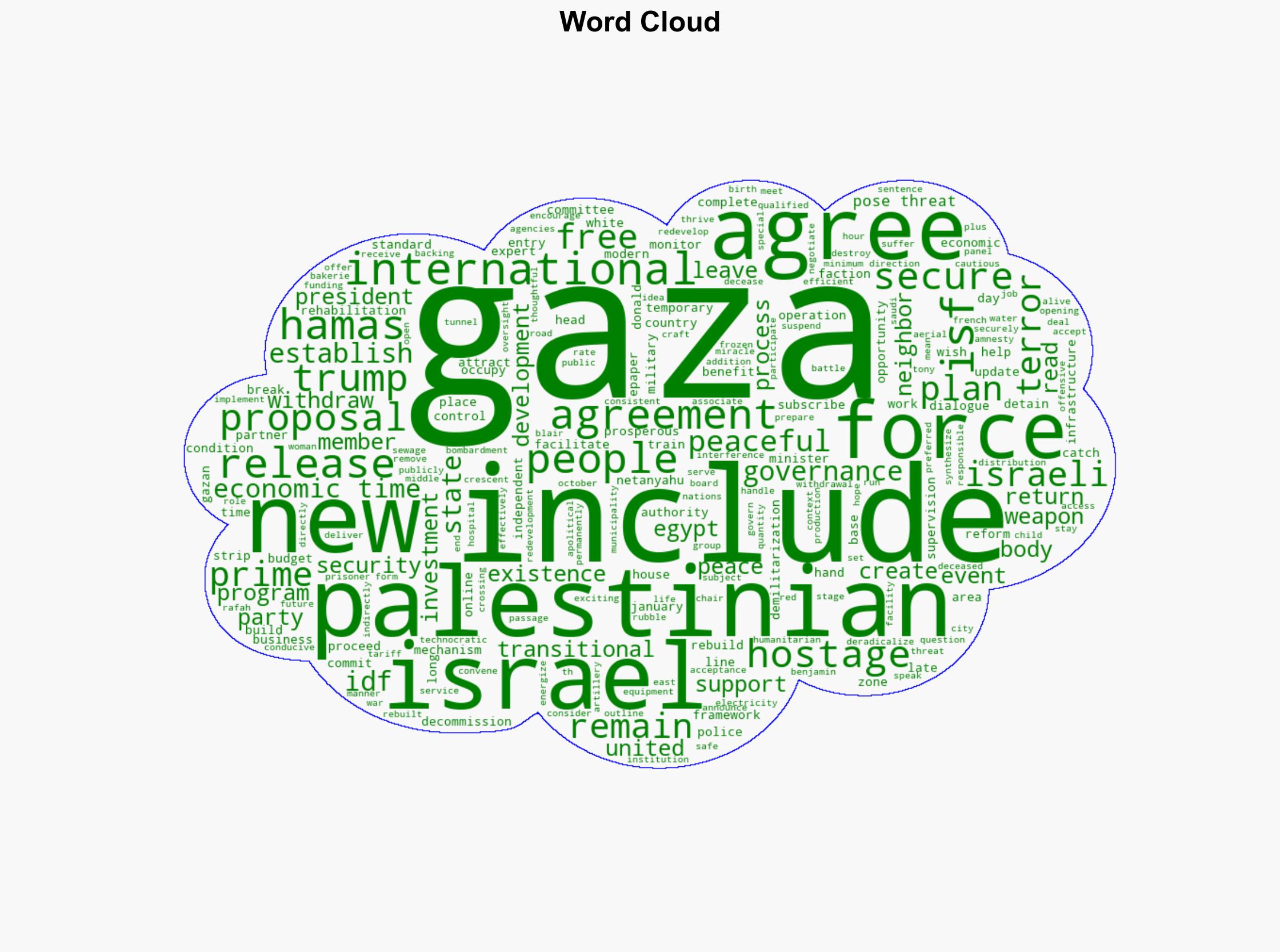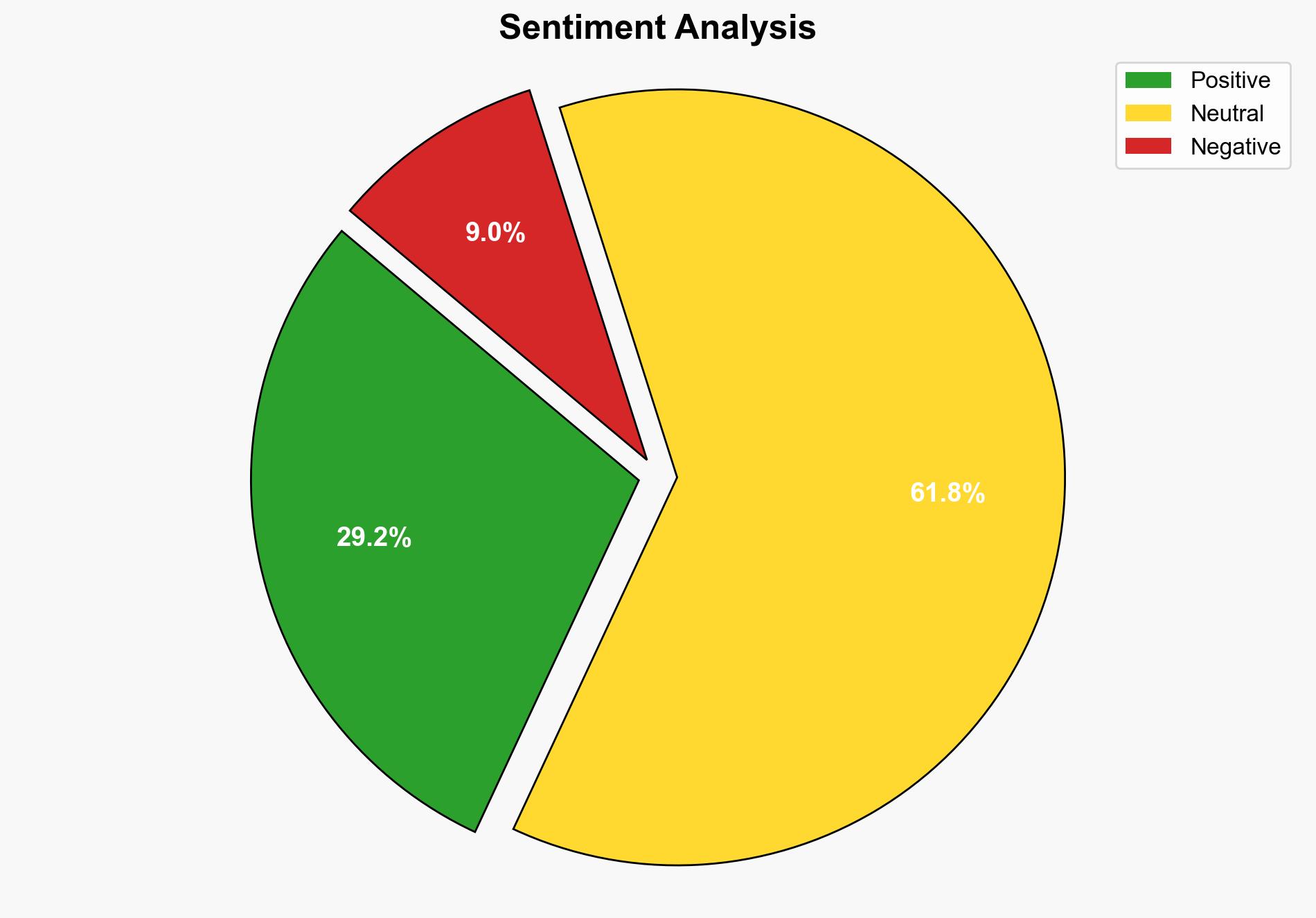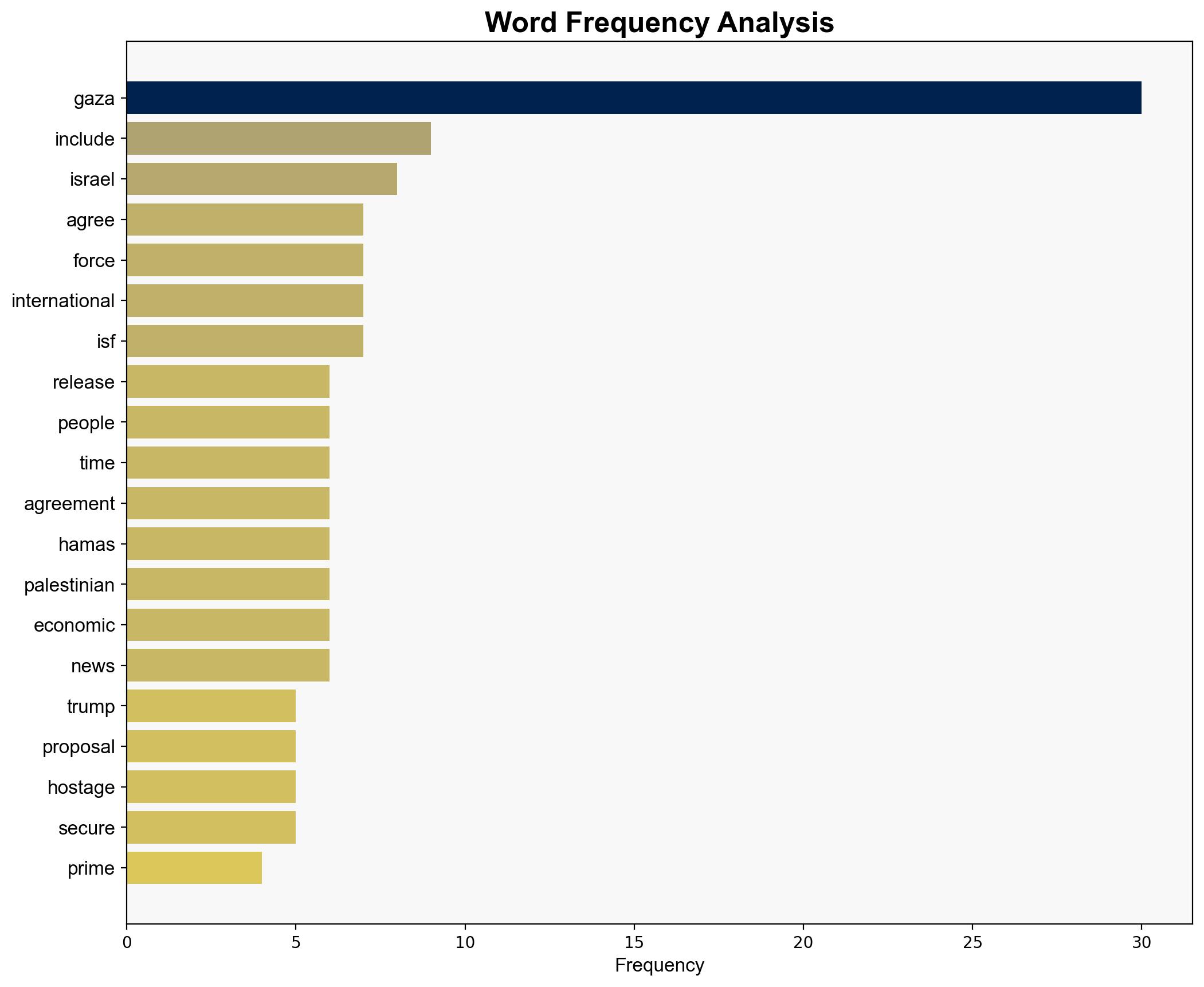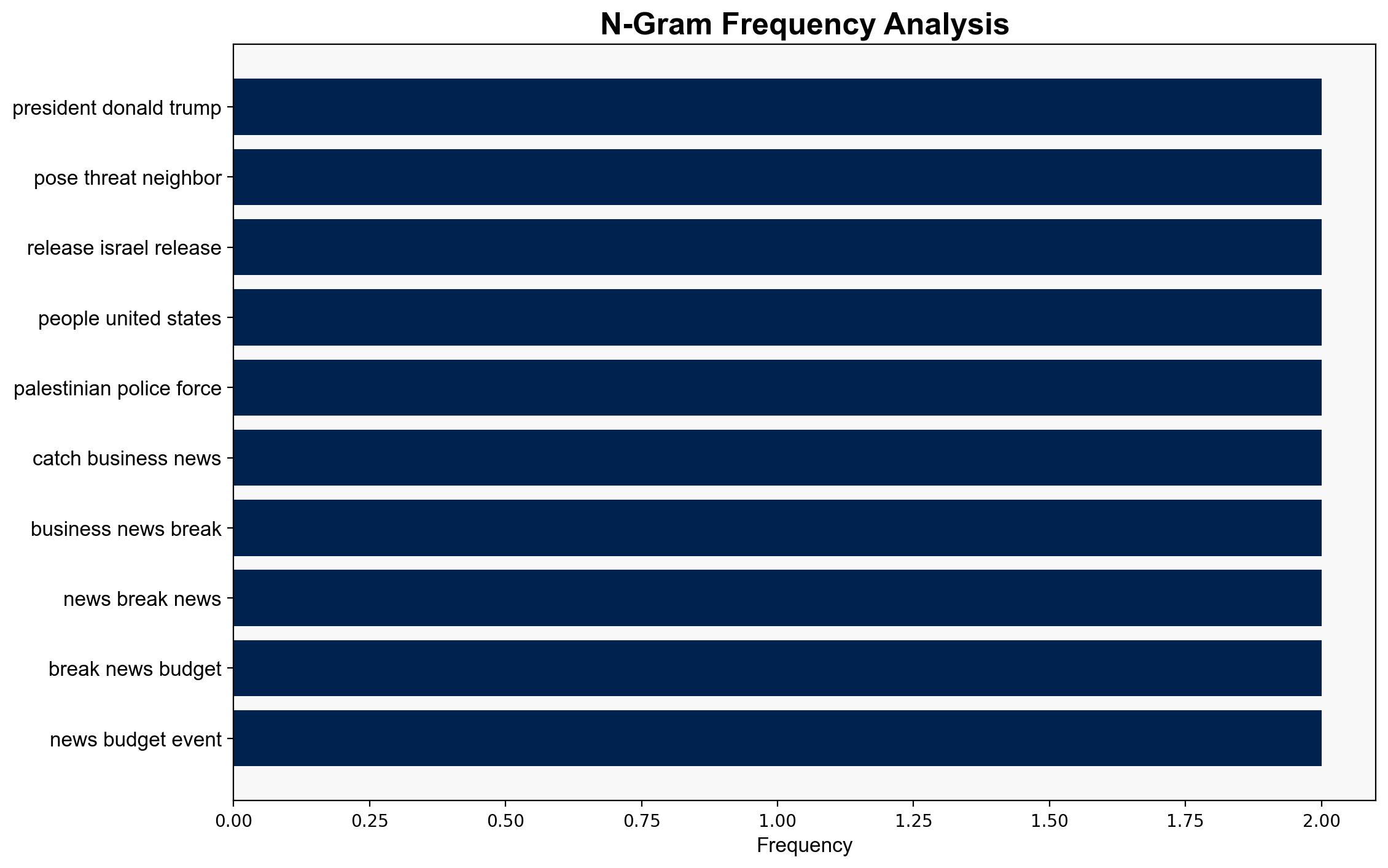Trump’s 20-point Gaza peace plan – The Times of India
Published on: 2025-09-30
Intelligence Report: Trump’s 20-point Gaza peace plan – The Times of India
1. BLUF (Bottom Line Up Front)
The most supported hypothesis is that Trump’s 20-point Gaza peace plan aims to stabilize the region by creating a framework for economic development and governance reform, contingent on the cooperation of key stakeholders like Israel and Hamas. Confidence level: Moderate. Recommended action: Engage in multilateral diplomacy to ensure stakeholder buy-in and address potential spoilers.
2. Competing Hypotheses
Hypothesis 1: The plan is a genuine effort to establish long-term peace and stability in Gaza by focusing on economic development and governance reform. This hypothesis is supported by the detailed proposals for infrastructure rehabilitation, governance by a technocratic committee, and international oversight.
Hypothesis 2: The plan primarily serves as a political maneuver to bolster Trump’s diplomatic credentials and distract from domestic issues, with limited feasibility of actual implementation. This is suggested by the ambitious scope and reliance on cooperation from historically uncooperative parties like Hamas.
3. Key Assumptions and Red Flags
Assumptions: Both hypotheses assume that all parties will act in good faith and that economic incentives will outweigh ideological commitments. There is also an assumption that international oversight will be effective in a historically volatile region.
Red Flags: The plan’s reliance on Hamas’s commitment to peace and decommissioning of weapons is a significant risk. The absence of detailed enforcement mechanisms for compliance is a potential blind spot.
4. Implications and Strategic Risks
The plan’s success hinges on unprecedented cooperation between Israel and Hamas, which could lead to regional stability if successful. However, failure to implement could exacerbate tensions, leading to renewed conflict. Economic development could be hindered by ongoing security concerns, and the plan’s ambitious scope may overwhelm existing governance structures.
5. Recommendations and Outlook
- Engage regional and international stakeholders to build consensus and ensure commitment to the plan’s objectives.
- Develop contingency plans to address potential non-compliance by key parties, particularly Hamas.
- Best Case: Successful implementation leads to regional stability and economic growth.
- Worst Case: Breakdown in negotiations leads to renewed conflict and humanitarian crisis.
- Most Likely: Partial implementation with ongoing challenges in achieving full cooperation from all parties.
6. Key Individuals and Entities
Donald Trump, Benjamin Netanyahu, Tony Blair, Hamas
7. Thematic Tags
national security threats, counter-terrorism, regional focus, diplomatic strategy, economic development





